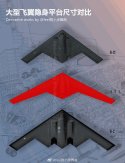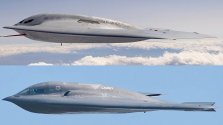sir this actual story is,that does not make much sense. How do you make an "advanced derivative of WS-20 with lower bypass ratio"? Where exactly is this engine? If H-20 is set to fly soon, this engine better be in production somewhere already.
it is a medium bypass ratio engine designed by AECC Sichuan. bypass ratio will be around 4 or 5 so they consider it high bypass.. it will be actually medium bypass.. here is the tender announcement from 2022..

then we saw this test flight of an unknown engine in 2023..
Engine dimension indicate medium bypass ratio engine. either WS-10 or WS-15 variant. China don't have any application for this type engine other than large stealth bomber like H-20 ..
Last edited:


